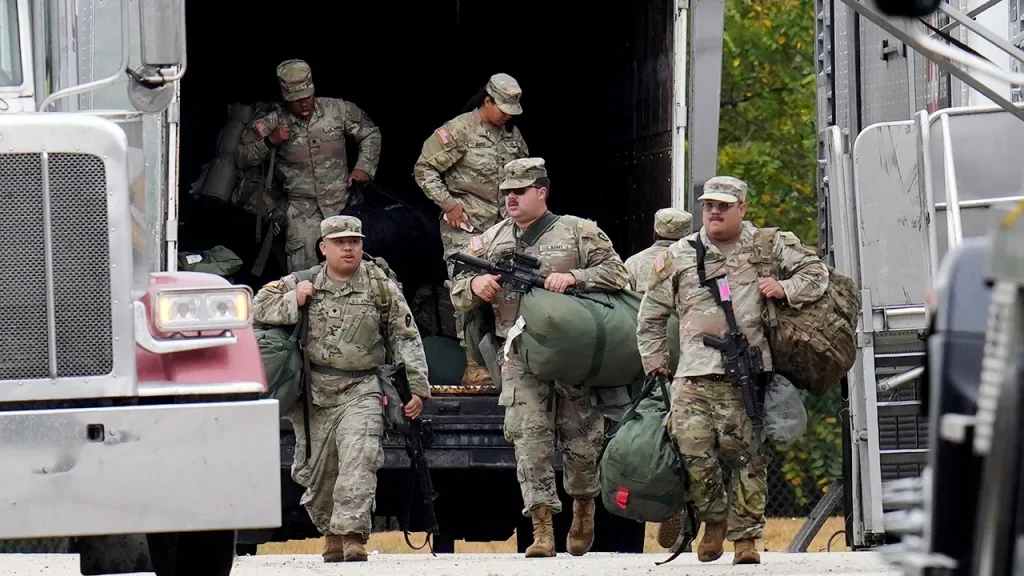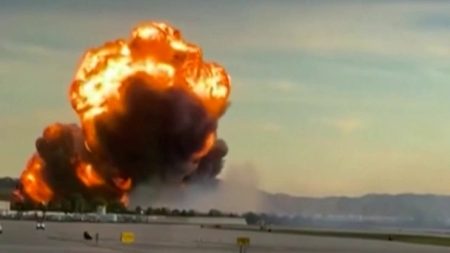Texas National Guard Removes Seven Members from Illinois Deployment, Citing Fitness Concerns
In a recent development that highlights the ongoing debates around military standards and deployment practices, the Texas Military Department (TMD) confirmed the removal of seven National Guard members from their mission in Illinois. These troops were part of a larger contingent of approximately 200 Texas National Guard personnel deployed to the state on October 7th for a 60-day mission focused on protecting federal personnel and property during a period of anti-immigration protests. The decision to replace these service members came during the pre-mission validation process, when officials determined they did not meet specific “mission requirements,” though the TMD did not provide detailed explanations for the individual removals.
This situation gained public attention after a photo of service members arriving in Illinois circulated widely on social media, prompting discussions about military fitness standards. Critics of the deployment questioned whether all troops met appropriate physical fitness requirements for such missions. In response to these concerns, a TMD spokesperson referenced recent statements by Secretary of War Pete Hegseth, who has advocated for “high, uncompromising, and clear” standards for military personnel. While the department didn’t explicitly confirm whether the service members in the viral photo were among those removed from the mission, the timing suggests a possible connection between the public scrutiny and the subsequent personnel changes.
The deployment itself exists within a complex legal landscape that reflects broader tensions in immigration enforcement and federalism. Most recently, a federal judge ruled that while National Guard troops could remain in Illinois, they would be prohibited from patrolling or protecting federal property directly. This ruling represents a partial compromise following the Trump administration’s request to lift prior restrictions on their deployment. The temporary restraining order essentially keeps the troops in place but limits their operational scope while further court arguments proceed, illustrating the judicial system’s attempt to balance federal security concerns with state authority.
The Illinois deployment comes at a time when the National Guard’s role in domestic operations has become increasingly politicized. Critics have questioned whether such deployments represent appropriate use of military personnel, particularly in contexts related to immigration enforcement. The mission was specifically established to address concerns about potential threats to federal personnel during anti-immigration demonstrations, highlighting how domestic political tensions around immigration policy have extended to questions about security and law enforcement approaches. The situation demonstrates how National Guard deployments now frequently operate at the intersection of public safety concerns and politically charged policy debates.
The TMD’s emphasis on maintaining high standards reflects broader conversations within military leadership about fitness requirements and combat readiness. Secretary Hegseth has been particularly vocal about maintaining rigorous physical standards for service members in combat roles, arguing that such standards should not be compromised. While the specific fitness issues that led to the removal of the seven Guard members weren’t detailed, the TMD’s public reference to Hegseth’s position signals alignment with this philosophy of maintaining consistent physical requirements. This approach has both supporters who emphasize combat effectiveness and critics who question whether all deployments—particularly those focused on property protection rather than direct combat—require identical fitness standards.
As the situation continues to evolve, the deployment remains in place under the modified conditions established by the court, with the replacement personnel now filling the positions of those who were removed. This incident highlights the ongoing challenges facing National Guard units, which must balance multiple responsibilities including disaster response, domestic security operations, and overseas deployments, all while maintaining appropriate personnel standards. The Illinois deployment represents just one example of how National Guard forces increasingly navigate complex intersections of legal constraints, political tensions, and operational requirements while conducting their missions within the United States. As courts continue to evaluate the proper boundaries of these deployments, the Guard’s role in situations involving immigration enforcement and civil unrest remains a subject of both legal and public debate.










